George Grosz (1893 – 1959)
Get a Grosz Certificate of Authenticity for your painting (COA) for your Grosz drawing.
For all your Grosz artworks you need a Certificate of Authenticity (COA) in order to sell, to insure or to donate for a tax deduction.
Getting a Grosz Certificate of Authenticity (COA) is easy. Just send us photos and dimensions and tell us what you know about the origin or history of your Grosz painting or drawing.
If you want to sell your Grosz painting or drawing use our selling services. We offer Grosz selling help, selling advice, private treaty sales and full brokerage.
We have been authenticating Grosz and issuing certificates of authenticity since 2002. We are recognized Grosz experts and Grosz certified appraisers. We issue COAs and appraisals for all Grosz artworks.
Our Grosz paintings and drawings authentications are accepted and respected worldwide.
Each COA is backed by in-depth research and analysis authentication reports.
The Grosz certificates of authenticity we issue are based on solid, reliable and fully referenced art investigations, authentication research, analytical work and forensic studies.
We are available to examine your Grosz painting or drawing anywhere in the world.
You will generally receive your certificates of authenticity and authentication report within two weeks. Some complicated cases with difficult to research Grosz paintings or drawings take longer.
Our clients include Grosz collectors, investors, tax authorities, insurance adjusters, appraisers, valuers, auctioneers, Federal agencies and many law firms.
We perform George Grosz art authentication, appraisal, certificates of authenticity (COA), analysis, research, scientific tests, full art authentications. We will help you sell your George Grosz or we will sell it for you.

1920
Museum of Modern Art, New York

1948 Oil on Canvas 76.5 x 56.2 cm
Hirshhorn Museum

1936 Watercolor, gouache, ink on paper 60.7 x 45.9 cm
Hirshhorn Museum
Georg Ehrenfried Groß, known as George Grosz, was a German artist, active in the Berlin Dada and New Objectivity movements. Before moving to Berlin, Grosz spent much of his childhood in the town of Stolp. In 1914 Grosz joined the military voluntarily, romanticizing the “war to end all wars” motto, created to promote service in the First World War. After only a year of service Grosz was discharged, until being called to duty again in 1917. Grosz only served a few months before receving his second discharge.

1952 Watercolor on Paper 23.5 x 17 in
Hirshhorn Museum.
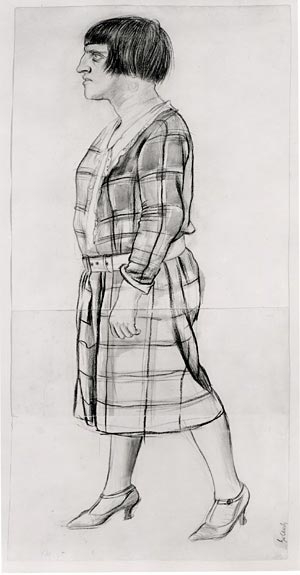
1926 Watercolor, pencil on paper 64.1 x 31.8 cm
Metropolitan Museum of Art, New York
By 1919 Grosz became active in the Communist Part of Germany and engaged in controversial activities, which led to his temporary arrest and a fine of 300 marks. As a communist, Grosz traveled to Russia and met both Lenin and Trotsky. After five months in Russia, Grosz lost his enthusiasm for the KPD and decided to leave the Communist Party in 1922.
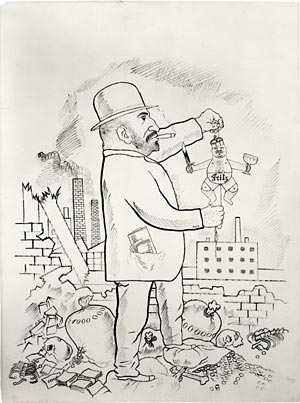
1920 Pen, brush, ink on paper 64.5 x 48.3 cm
Metropolitan Museum of Art, New York

1920 Pen and ink on paper 52.7 x 35.6 cm
Metropolitan Museum of Art, New York
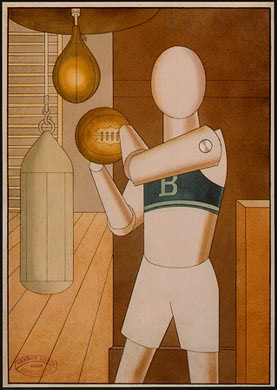
1922 Pen, ink, watercolor
National Gallery, DC
Grosz was strongly opposed to Hitler’s leadership, and decided to emigrate to the United States before the Nazi’s gained more power. Grosz first went to New York in 1932 to teach a course at the Art Students League. By 1938 he became a naturalized citizen and settled with his family in Bayside, New York. When looking at Grosz’s paintings it can be easily seen that Grosz drastically changed his style of painting after leaving Germany. The change in his paintings, mirror Grosz’s attempt to create a fresh start in a new country.
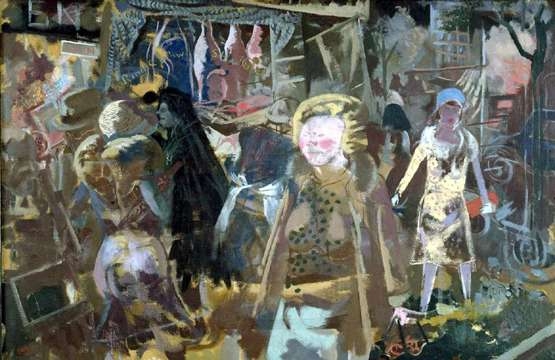
1931 Oil on Canvas
Museum of Grenoble
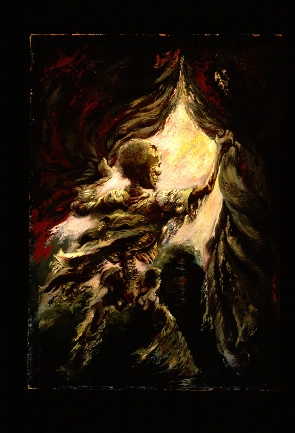
1943 Oil on Masonite
In the 1950s Grosz started teaching art classes out of his home and became a member of the American Academy of Arts and Letters. In The United States, Grosz exhibited frequently and published an autobiography titled, A Little Yes and a Big No.

1950 Watercolor on paper 23.5 x 17.5 in
Orlando Museum of Art

1916 Oil on Canvas 48.3 x 32.4 cm
St. Louis Museum of Art
A few years before his death, Grosz decided to return to Berlin. Grosz died in 1959 after falling down a staircase in an inebriated state. Posthumously, Grosz has become the subject of several films and museum retrospectives. His early paintings create an important picture of the Weimar Republic of Berlin in the 1920s, which is both crude and uncensored. Grosz’s work is now in important museums and private collections around the world.
Do you think you own a painting by George Grosz? Contact us. We are the Grosz experts.
